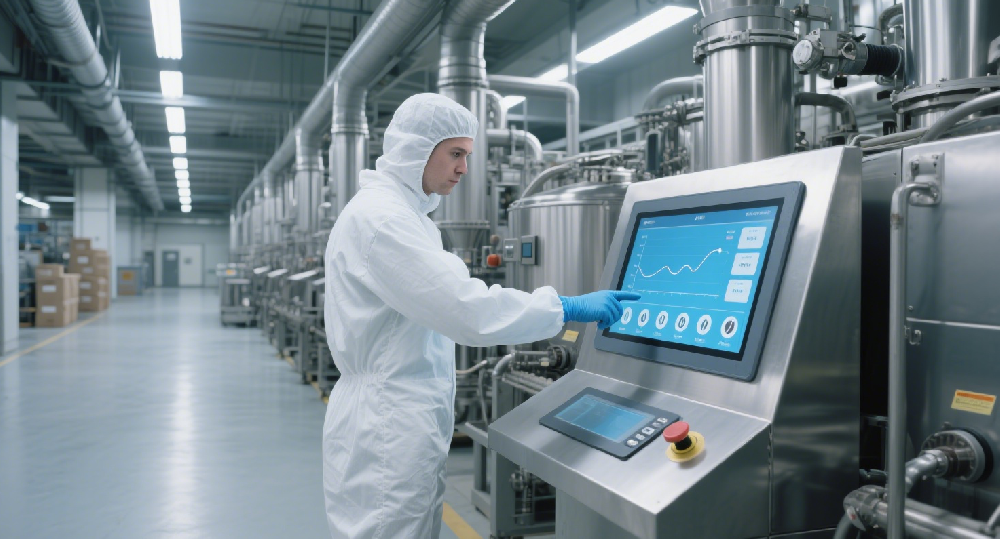
News
Tepuxun Industrial Monitor news

Tepuxun Industrial Monitor news
In a state-of-the-art coffee production facility specializing in premium bean processing, a high-speed production line churning out 5,000 kilograms of ground coffee daily relies heavily on our 7-inch industrial control displays and integrated industrial computers. These systems serve as the operational backbone, orchestrating precision across every stage from bean roasting to final packaging, ensuring consistent quality and maximum throughput.

The roasting phase, often called the "heart of coffee production," demonstrates the critical role of our technology. As green coffee beans enter the rotary roaster, our industrial computer continuously monitors temperature fluctuations via embedded sensors, capturing data 50 times per second. This real-time stream feeds into the 7-inch display mounted on the roaster's control panel, where operators view a vivid thermal gradient graph alongside a digital countdown timer. When processing a batch of Ethiopian Yirgacheffe beans, the system automatically adjusts air flow rates based on preprogrammed roast profiles—all visualized through dynamic flow meters on the screen. A recent upgrade to our resistive touch interface proved invaluable here: even with gloves on, operators can fine-tune roast parameters by 0.1°C increments, resulting in a 30% reduction in roast defects compared to the facility's previous analog controls.
After roasting, the cooling chamber presents another challenge where precision is paramount. Our industrial computer regulates the chamber's ventilation system, maintaining a strict 25°C ambient temperature to halt the roasting process uniformly. The display shows a live countdown to optimal bean temperature (typically 40°C), with color-coded alerts if cooling rates deviate by more than 2°C per minute. During a particularly humid week, the system's IP65-rated display withstood condensation buildup without compromising visibility, while the industrial computer's (-20°C to 70°C) ensured uninterrupted operation despite fluctuating warehouse temperatures. This reliability helped maintain a 99.7% cooling uniformity rate, a 5% improvement over the previous system.
In the grinding section, our technology excels at handling variable particle size requirements. The display's split-screen functionality shows both the target grind size (measured in microns) and real-time output from laser particle analyzers. When switching between espresso (200-300μm) and French press (800-1000μm) grinds, operators use the capacitive touch interface to select pre-saved profiles, triggering the industrial computer to adjust the mill's burr spacing automatically. A recent audit revealed this capability reduced changeover time between product lines from 15 minutes to just 2, increasing overall line efficiency by 12%. The system's data logging feature—accessible via a USB port on the display—also simplified compliance with food safety regulations by storing 90 days of grind settings and particle size measurements.
The final packaging stage highlights our system's integration capabilities. As ground coffee moves to filling machines, the industrial computer syncs with weight sensors to ensure each 250g pouch contains exactly 250.0±0.5g of product. The display shows a running tally of filled pouches alongside a histogram of weight variances, with automatic alerts if three consecutive pouches fall outside tolerance. During a recent promotional campaign requiring special 100g packages, operators reconfigured the filling parameters via the display's intuitive menu system in under 60 seconds—a task that previously required manual calibration and took over 10 minutes. This agility helped the facility meet a sudden 30% increase in demand without overtime costs.
Over six months of operation, the facility reported a 18% reduction in bean waste, primarily due to the system's precise roast control, and a 22% increase in daily output thanks to faster changeovers. "We used to lose entire batches because of temperature spikes during roasting," noted the plant manager. "Now the display warns us before issues arise, and the industrial computer makes micro-adjustments we could never do manually." For coffee producers balancing artisanal quality with mass production demands, our display and control systems deliver the perfect blend of precision and flexibility.
Please enter your contact phone number
